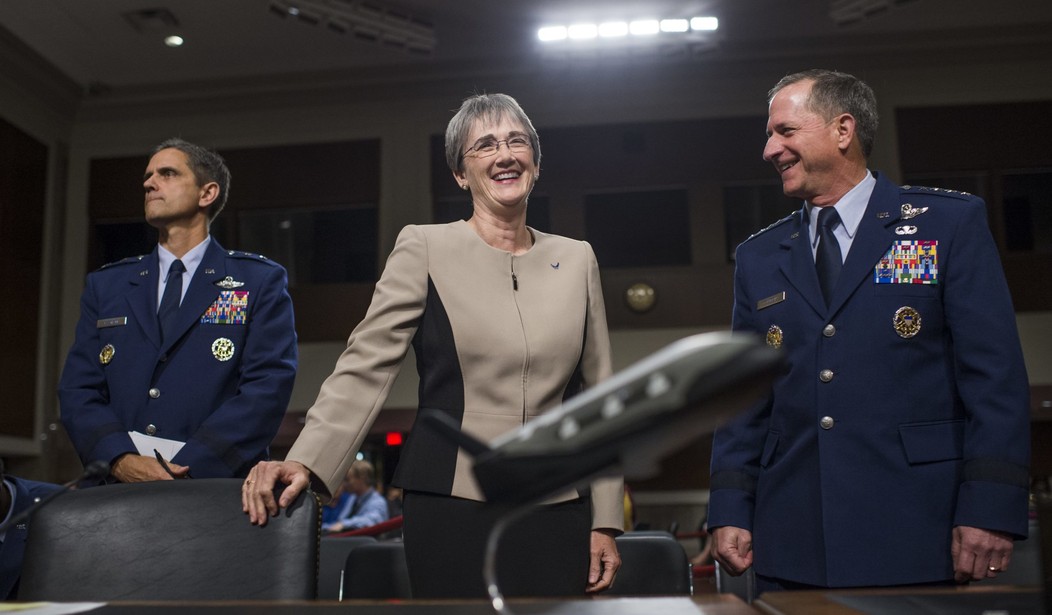WASHINGTON – Echoing what military officials have been saying in other branches, Air Force Secretary Heather Wilson said on Thursday that budget constraints are pushing her branch to the breaking point.
“We are being stretched so much that it’s hurting our readiness, particularly for the high-end fight, and it’s also causing huge problems with air crew retention and other things,” Wilson said at the Center for Strategic & International Studies.
She blamed this largely on the fact that the Air Force is operating for the ninth year in a row under a continuing resolution. To further her point, she said that in 1991, the Air Force had 134 fighter squadrons, and that number today is 55, yet the Air Force is more active across the globe than during the Cold War. She also noted that the average age of Air Force aircraft is 27 years old, and the branch is understaffed by about 1,500 fighter pilots.
Wilson described a recent trip to the Al Udeid Air Base near Doha, Qatar, where she spoke with the crew commander about a fleet of B-52 bombers from Minot, N.D., which was used to fight ISIS. The bombers engaged in everything from dropping leaflets to precision air support.
The crew, Wilson explained, would return to Minot after four months in the dessert, and they were expected to complete nuclear surety inspections, which are some of the Air Force’s “most rigorous inspections.” She said it’s not right to expect crews to complete these inspections after four months of fighting, when they haven’t seen their families.
“We would never have done that during the Cold War because we were large enough to not put crews in that situation,” she said. “(The crew commander) said what all our airmen say: ‘We’ve got this, m’am. We got this.’ It is not fair to push our airmen right up to the point of failure because they are such lean-forward, we-got-this people, because when we don’t got this, when this town doesn’t got this. We are too small, and I fear that we are pushing the force close to breaking.”
Among Air Force capability, capacity and readiness, she said that readiness is her No. 1 concern. In terms of acquisitions, the secretary’s priorities are the F-35 fighter jet (which she described as a game changer, a “flying computer”), the B-21 bomber and the KC-46 tanker.
The Air Force has said publicly that it needs at least 100 B-21 bombers, but she said the exact number will depend on national military strategy being drawn up now. She said the Air Force should have a “good road map” for the weaponry it will need in the next round of budget discussions with Congress.
Since ISIS declared its caliphate in 2014, the U.S. has used more than 54,000 precision weapons in targeting ISIS. The secretary described the fight against ISIS as a “precision-weapon battle enabled by exquisite intelligence,” noting that there are 60 to 65 tanker missions every day up and down the Persian Gulf.
“We are a global power, but that means dependence on tankers,” she said.
Wilson was asked about the threat of North Korea, and she explained that missile defense is not the primary responsibility of the Air Force.
“If we are at the point of having to decide whether to decide to use our missile-defense system, it is America’s worst day,” Wilson replied. “And we don’t ever want to get into that situation, so our responsibility at the United States Air Force is to seek to be strong so that we deter that from ever happening.”









Join the conversation as a VIP Member